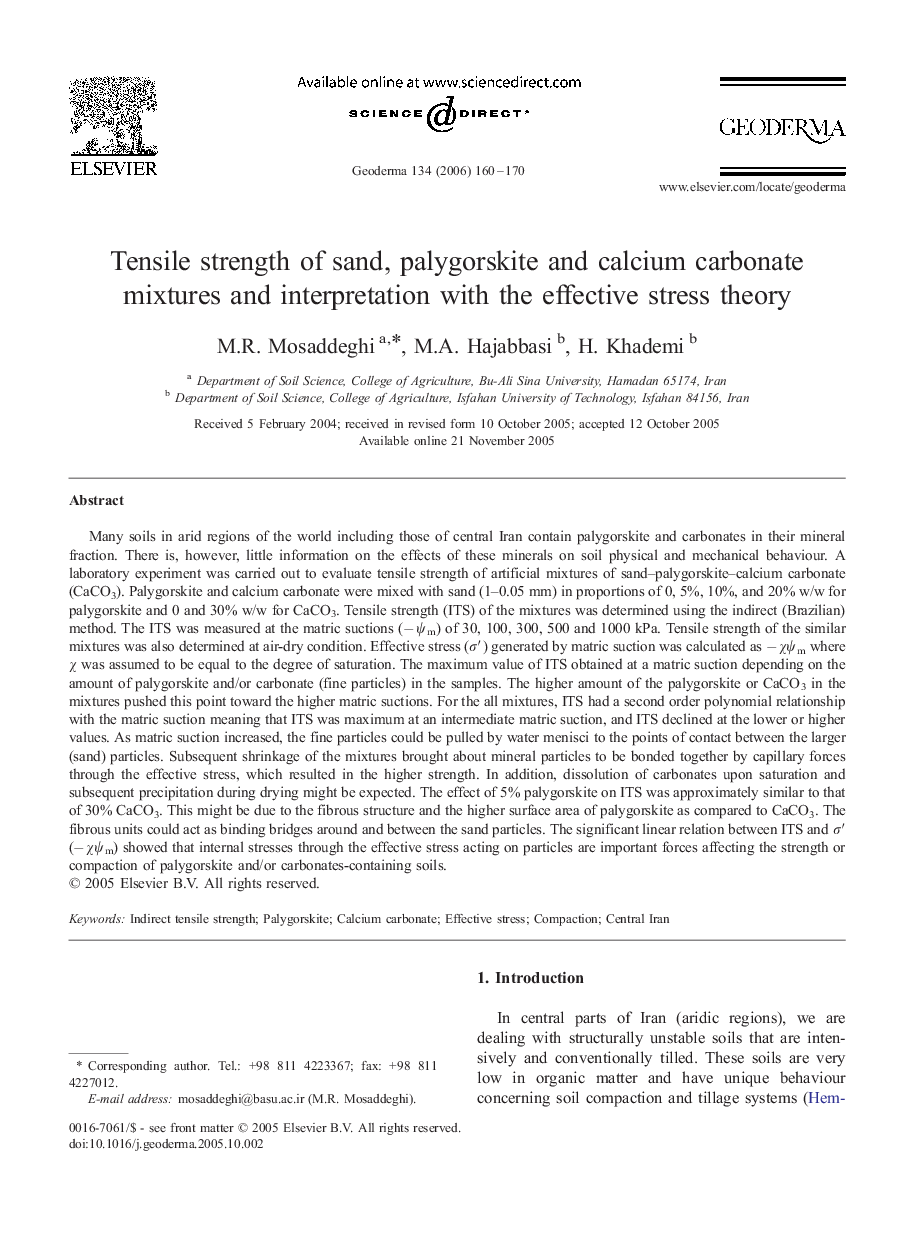| کد مقاله | کد نشریه | سال انتشار | مقاله انگلیسی | نسخه تمام متن |
|---|---|---|---|---|
| 4575797 | 1629564 | 2006 | 11 صفحه PDF | دانلود رایگان |

Many soils in arid regions of the world including those of central Iran contain palygorskite and carbonates in their mineral fraction. There is, however, little information on the effects of these minerals on soil physical and mechanical behaviour. A laboratory experiment was carried out to evaluate tensile strength of artificial mixtures of sand–palygorskite–calcium carbonate (CaCO3). Palygorskite and calcium carbonate were mixed with sand (1–0.05 mm) in proportions of 0, 5%, 10%, and 20% w/w for palygorskite and 0 and 30% w/w for CaCO3. Tensile strength (ITS) of the mixtures was determined using the indirect (Brazilian) method. The ITS was measured at the matric suctions (− ψm) of 30, 100, 300, 500 and 1000 kPa. Tensile strength of the similar mixtures was also determined at air-dry condition. Effective stress (σ′) generated by matric suction was calculated as − χψm where χ was assumed to be equal to the degree of saturation. The maximum value of ITS obtained at a matric suction depending on the amount of palygorskite and/or carbonate (fine particles) in the samples. The higher amount of the palygorskite or CaCO3 in the mixtures pushed this point toward the higher matric suctions. For the all mixtures, ITS had a second order polynomial relationship with the matric suction meaning that ITS was maximum at an intermediate matric suction, and ITS declined at the lower or higher values. As matric suction increased, the fine particles could be pulled by water menisci to the points of contact between the larger (sand) particles. Subsequent shrinkage of the mixtures brought about mineral particles to be bonded together by capillary forces through the effective stress, which resulted in the higher strength. In addition, dissolution of carbonates upon saturation and subsequent precipitation during drying might be expected. The effect of 5% palygorskite on ITS was approximately similar to that of 30% CaCO3. This might be due to the fibrous structure and the higher surface area of palygorskite as compared to CaCO3. The fibrous units could act as binding bridges around and between the sand particles. The significant linear relation between ITS and σ′ (− χψm) showed that internal stresses through the effective stress acting on particles are important forces affecting the strength or compaction of palygorskite and/or carbonates-containing soils.
Journal: Geoderma - Volume 134, Issues 1–2, September 2006, Pages 160–170